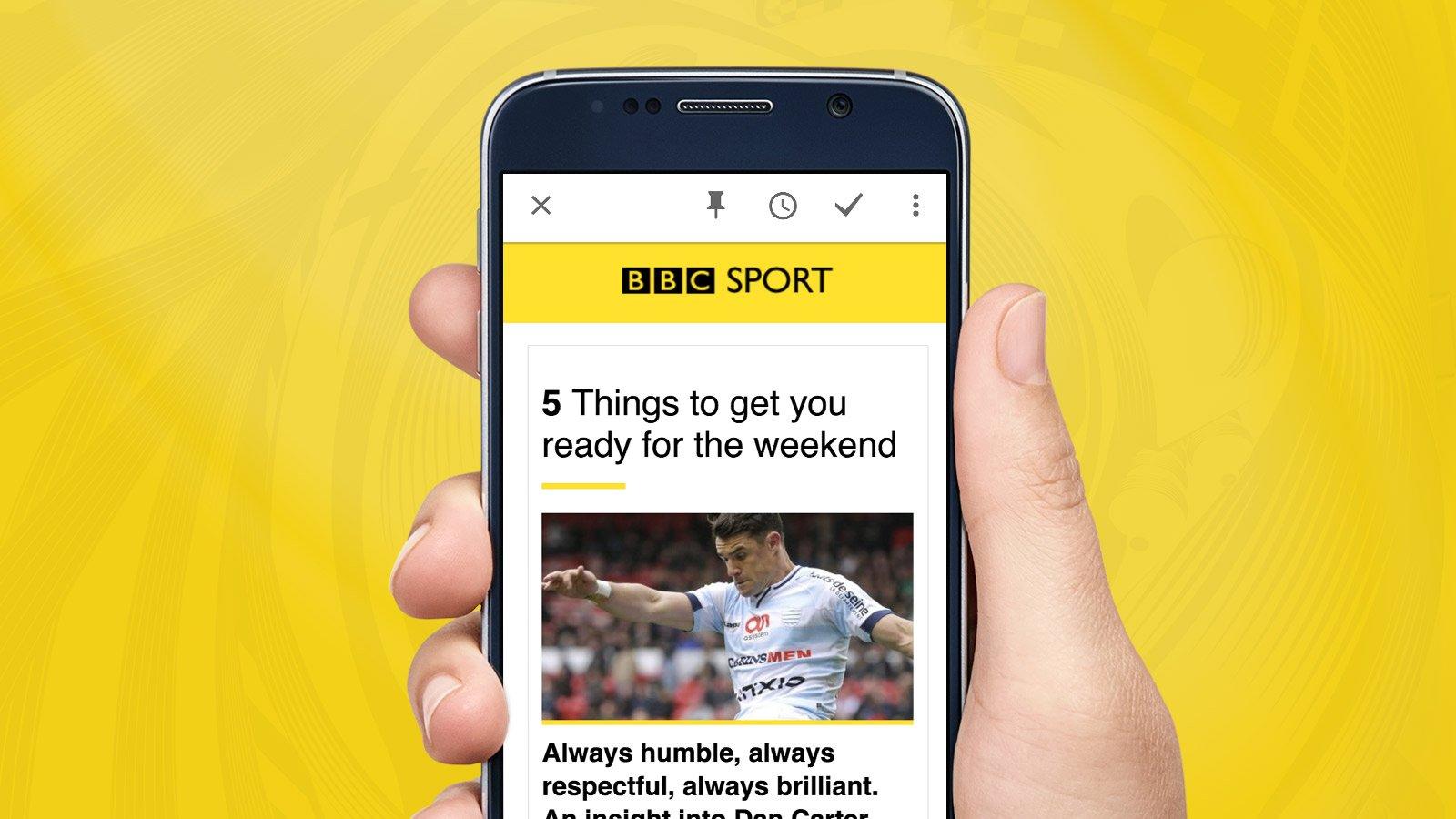'Lewis Hamilton shows difference between a good & great driver'
- Published
- comments
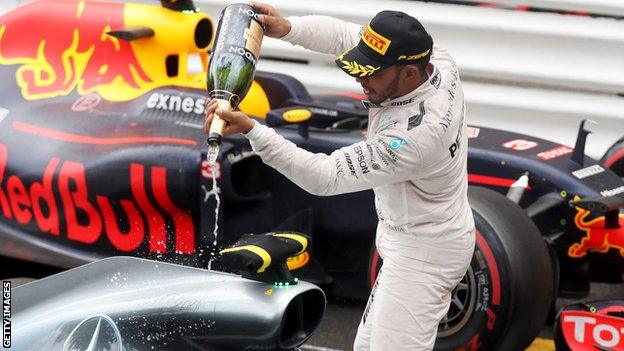
Wetting the Benz's head: Hamilton christens his first winning car of the season
As Lewis Hamilton came up to complete the final lap of his Monaco Grand Prix victory on Sunday, team-mate Nico Rosberg's Mercedes was within sight, a lap behind.
The circumstances that led to this crushing advantage were not completely to do with Hamilton's superiority, but as an illustration of the gulf between the two title rivals on this day, it was as good as any.
There were others, though, too.
In the soaking wet first 15 laps of the race, when Hamilton was bottled up behind Rosberg, Red Bull's Daniel Ricciardo built a 13-second lead on the two Mercedes.
Once the German let him through following a team order, Hamilton pulled 10 seconds on the other Mercedes in five laps, as well as eating slowly into Ricciardo's lead.
After Rosberg stopped to fit intermediate tyres on lap 20, he was unable to pull clear of a train of cars featuring two Force Indias and Sebastian Vettel's Ferrari, despite his car's theoretical performance advantage.

Princess Charlene (left) and Prince Albert II of Monaco (right) hand out the trophies in the principality
In the course of the next round of pit stops to fit dry-weather slicks, partly because of a slow stop, Rosberg lost places to both Force India's Sergio Perez and Vettel, and found himself behind the McLaren of Fernando Alonso. Which he was unable to pass for the remaining 46 laps.
He was then mugged on the last lap by Perez's team-mate Nico Hulkenberg to finish an eventual seventh.
It was not, to say the least, one of Rosberg's better days.
Hamilton at his best
Hamilton, meanwhile, drove one of his greatest races to take his first victory since he clinched the title in Austin in late October last year, and finally got his 2016 title campaign off the ground.
The tide was always going to turn sooner or later; Hamilton's luck, dreadful so far this season, always going to change eventually.
When it did, it came in the most dispiriting fashion for Rosberg, who throughout the Monaco weekend was reminded in the starkest terms of his team-mate's inherent superiority as a grand prix driver.
Hamilton has 'momentum' after Monaco win
It started in the first half-hour of first practice, with a series of laps by Hamilton that emphasised his innate feel and sensitivity on one of the most challenging race tracks in the world.
For most of those 30 minutes, each driver got progressively faster as they built up speed and came to terms with the proximity of the walls and the quirks of the Monaco track for the first time in a year.
The difference was that Hamilton was well over a second - sometimes nearly two - quicker than Rosberg. No sooner would Rosberg make the margin more respectable than Hamilton would move the goalposts again.
This sort of thing is seen from Hamilton a lot, but it is never more stark than in these sorts of circumstances, which emphasise naked talent much more than similar situations on more modern, sanitised tracks.
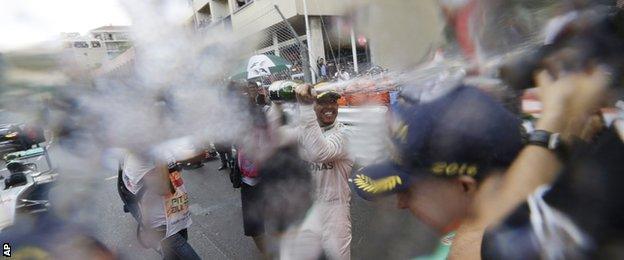
Hamilton later thanked Rosberg for letting him past during the race
Eventually, Rosberg got down to within 0.1-0.2secs of Hamilton, as he generally does. But the point had been made. One suspects it was done deliberately, as if to say, "Mate, you might have a 43-point lead in the championship, but can you do this? Didn't think so. That's what you're up against."
Later that afternoon, Mercedes received a shock in the form of the pace of Ricciardo's Red Bull, which was clearly quicker than them.
Part of their solution to that in terms of changes to the car was to give it a bit more oversteer - or pointy-ness - in a bid to aid rotation into corners.
Rosberg, sources close to him say, was never that comfortable with the car after that.
Why was Rosberg so slow?
This could well be at least part of the explanation for Rosberg's lack of pace in the wet first part of the race.
He said he felt "a complete lack of confidence in the car". He didn't dare go near the limit, he said, otherwise he would have hit the barriers.
He was at a loss to explain what had gone on, but it seems likely this may well have led to a vicious downward spiral of contributing factors.
Not being pushed hard, the tyres would lose heat and pressure. Which would mean he was not able to work the brakes as hard as normal. Which would explain the brake temperature problems he experienced. Which would further take the tyres out of their ideal window. And so on.
Somehow, despite being held to Rosberg's pace behind him, Hamilton managed to keep his tyres and brakes in their window so that the pace was immediately there when Mercedes made the only call they could and ordered Rosberg to let him by.
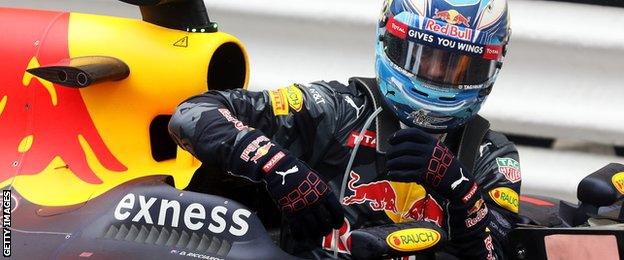
Ricciardo was fuming after the race - at Hamilton's move as they battled, and at his own team
Rosberg said it was "simple" to accept it, albeit "painful", knowing that the reason it had been made was that otherwise Mercedes were throwing away any chance of winning.
But it says a lot for him that he responded to it with alacrity and equanimity, knowing that he was almost certainly consigning himself to losing a significant chunk of his points advantage to Hamilton, who was right to thank him publicly for being a gentleman afterwards.
If his struggles in the race came at an awkward time for a man in the middle of negotiations over a new contract, his behaviour in this situation will have gone a long way to counteracting the impact of his performance.
Hamilton and Ricciardo on the edge
Once released, Hamilton drove a superb race, matched only by Ricciardo, his only rival for victory.
He and his engineers gambled on staying out on the 'extreme' wet tyres when everyone else stopped for intermediates, knowing that was their only way of getting into the lead.
Impressively, on a drying track, on heavily treaded tyres that were now more than 20 laps old, Hamilton was lapping not far off the pace - and sometimes more or less on it - that Rosberg was doing on the intermediate tyres behind him. While managing to hold off a charging Ricciardo at the same time.
He finally bailed on those tyres after 31 laps. At this point, the valiant gamble should have failed, but the race was handed to him when Red Bull made another terrible strategic fumble - their second in two races.
Ricciardo stopped for slick tyres the next time around, and a stunning in-lap, combined with Hamilton's slow out lap, should have got him comfortably out into the lead, which would almost certainly have become a well-deserved victory.

Red Bull are looking increasingly like they are very close to challenging the dominant Mercedes
But because of what Red Bull team boss Christian Horner described as a "communication error", the tyres Ricciardo's engineer chose for the car were at the back of the garage, and a pit stop from the Keystone Cops followed, losing 10 seconds. Ricciardo exited the pits as Hamilton flew by into the first corner.
And this was the next superlative part of Hamilton's race. Now it was his turn to struggle. Ricciardo, one of the most improvisational overtakers in F1, was clearly faster. But the Mercedes held the Red Bull back.
The closest it got was on lap 37, when at one of several re-starts after periods of the virtual safety car, Ricciardo pressured Hamilton into braking too late and going in to the chicane too shallow and deep. He cut a part of the corner, lost momentum on the exit and had to give the Red Bull a bit of a chop on the harbour front to keep it behind.
On another day, he might have been penalised for gaining an advantage by going off the track - Ricciardo certainly felt it worth a question. But the stewards felt it to be within the bounds of acceptability and did the F1 equivalent of waving play on.
Ricciardo never got as close again. Suddenly Hamilton was setting fastest laps, and it became clear he had been measuring out his tyre life to ensure they made the distance - which was a stretch given the 45 laps they were being asked to do.
The task Rosberg faces
All in all, it was a weekend that emphasised the difference between a very good driver and a great one.
At 24 points, Rosberg still has a substantial lead. But Monaco was a reminder that in these sorts of races, when steady progression through a weekend is thrown out of the window, when the weather throws up a wildcard, when drivers have to adapt on the hoof, when the car is difficult, Hamilton is more often than not on another level to Rosberg.
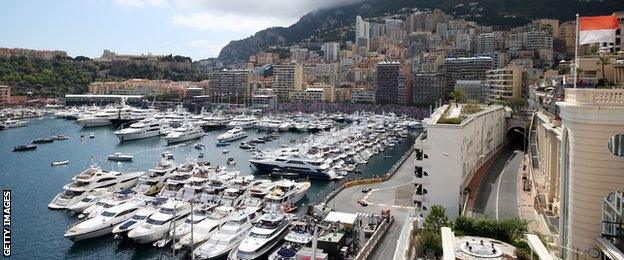
Monaco is a processional race - unless it rains
He has continued to deny it whenever asked, but Rosberg must know that this year may well be the best chance he ever gets to win a world championship.
It is hard to imagine that circumstances will ever again conspire in the way misfortune has hit Hamilton this year to give Rosberg a 43-point lead after five races.
Whenever the size of his advantage has been pointed out to him this year, he has generally responded by saying Hamilton is still as quick as ever and will inevitably bounce back.
In Monaco, it happened, and the brutal nature of it cannot have done other than knock Rosberg back.
He is a resilient man, who has bounced back from worse than this. But how Rosberg responds - to this and to the extra threat of a now-resurgent Red Bull - will be a significant aspect of what defines the rest of the season, and how effectively he manages to keep Hamilton at bay.
If indeed he can.
- Published29 May 2016
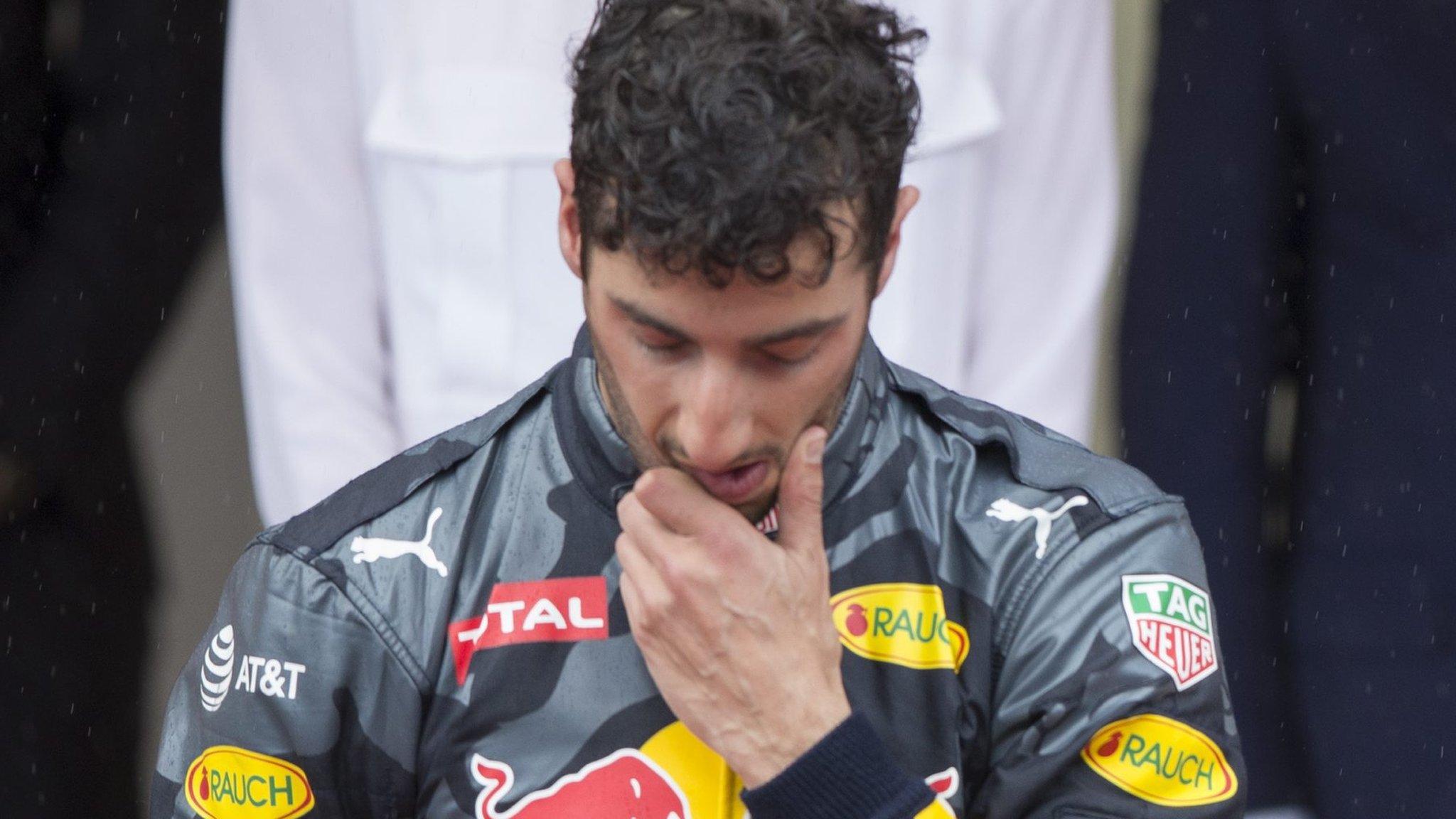
- Published29 May 2016
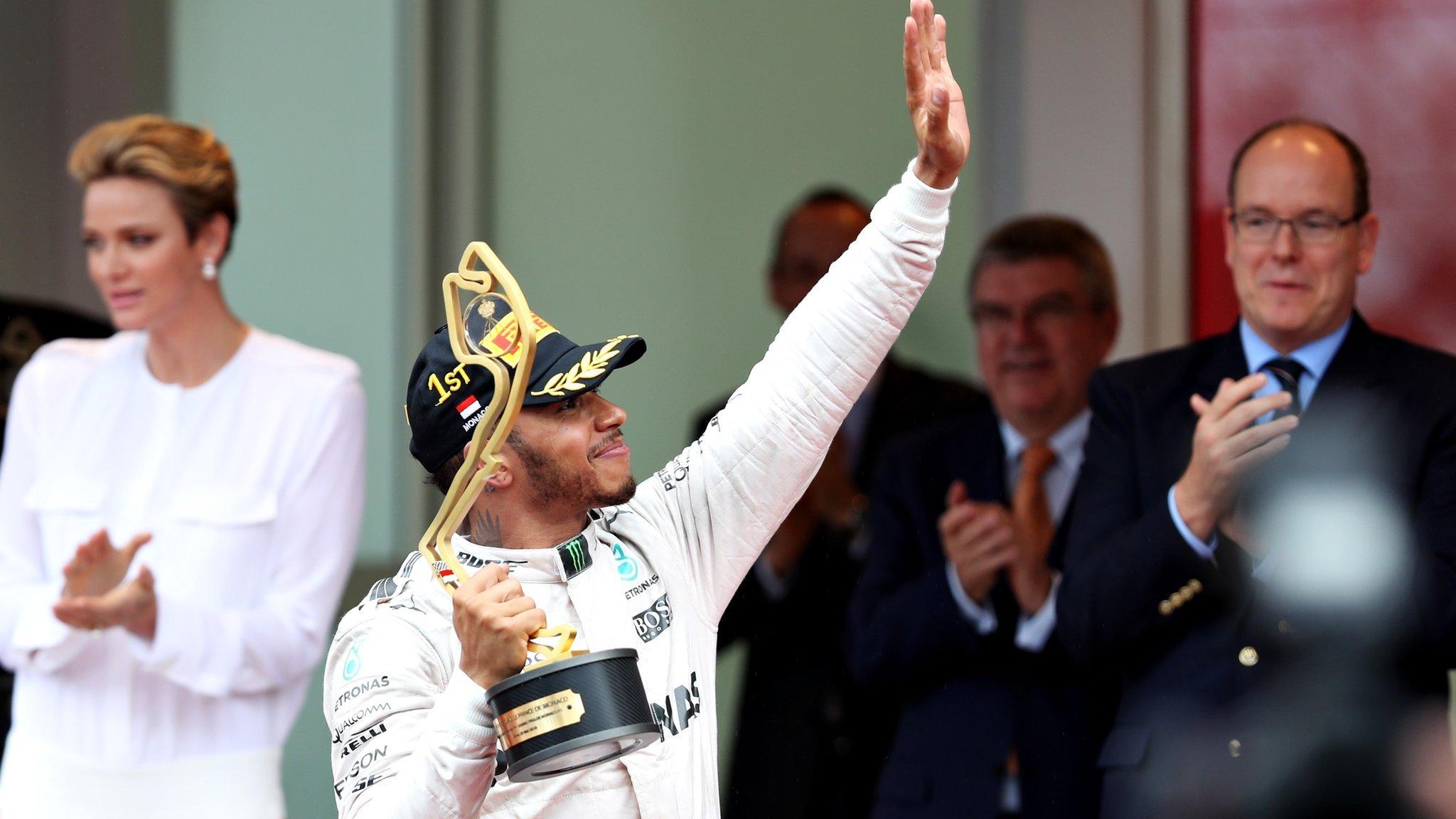
- Published29 May 2016
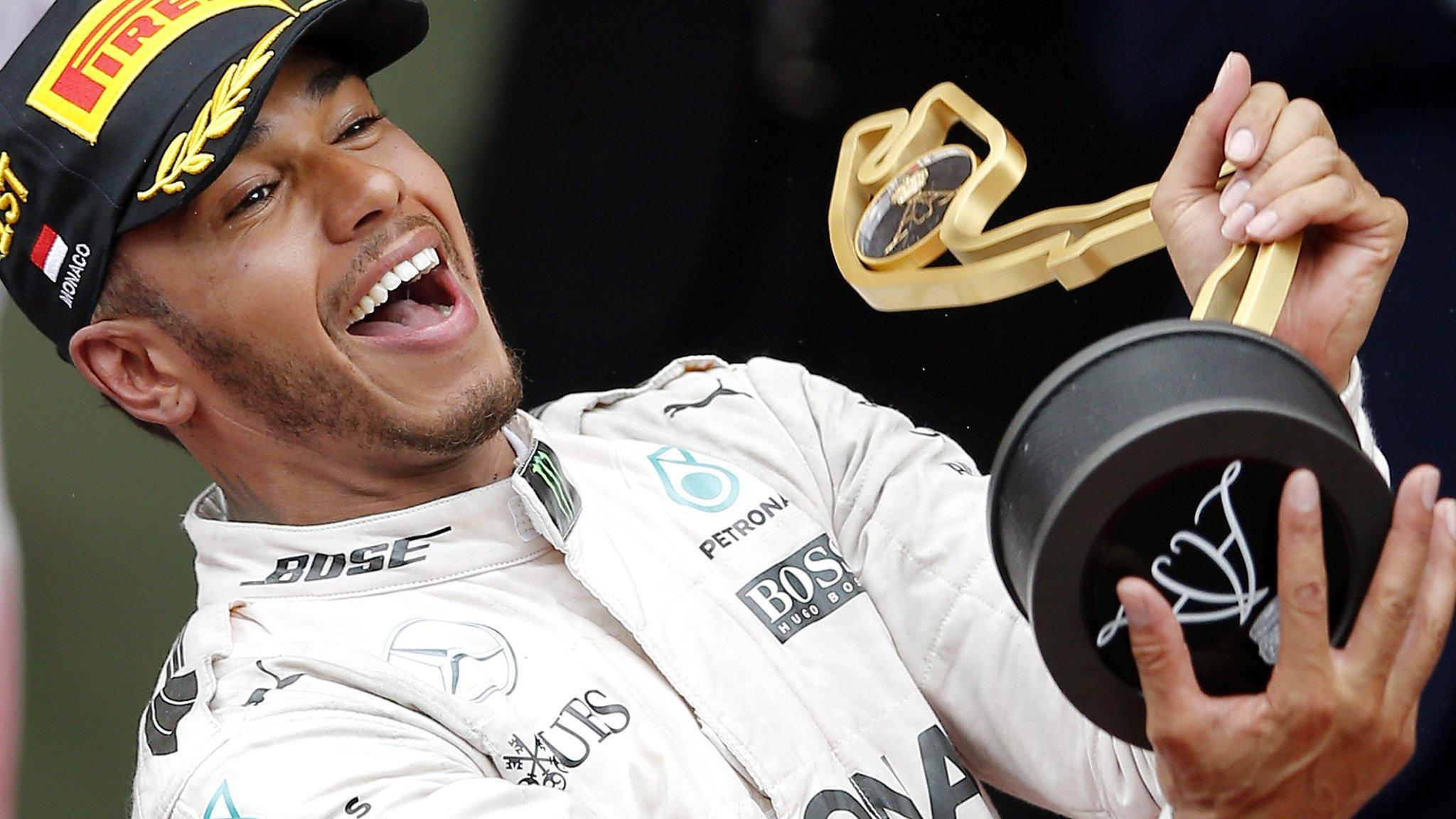
- Published29 May 2016
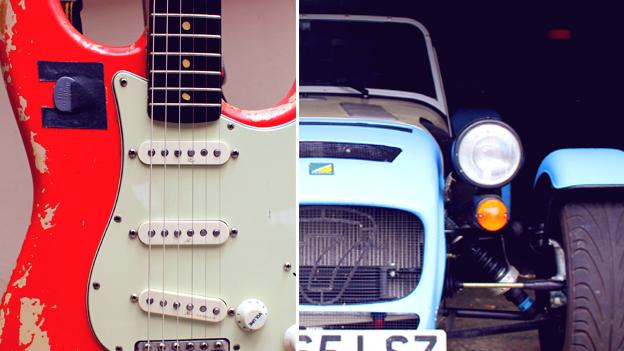
- Published29 May 2016
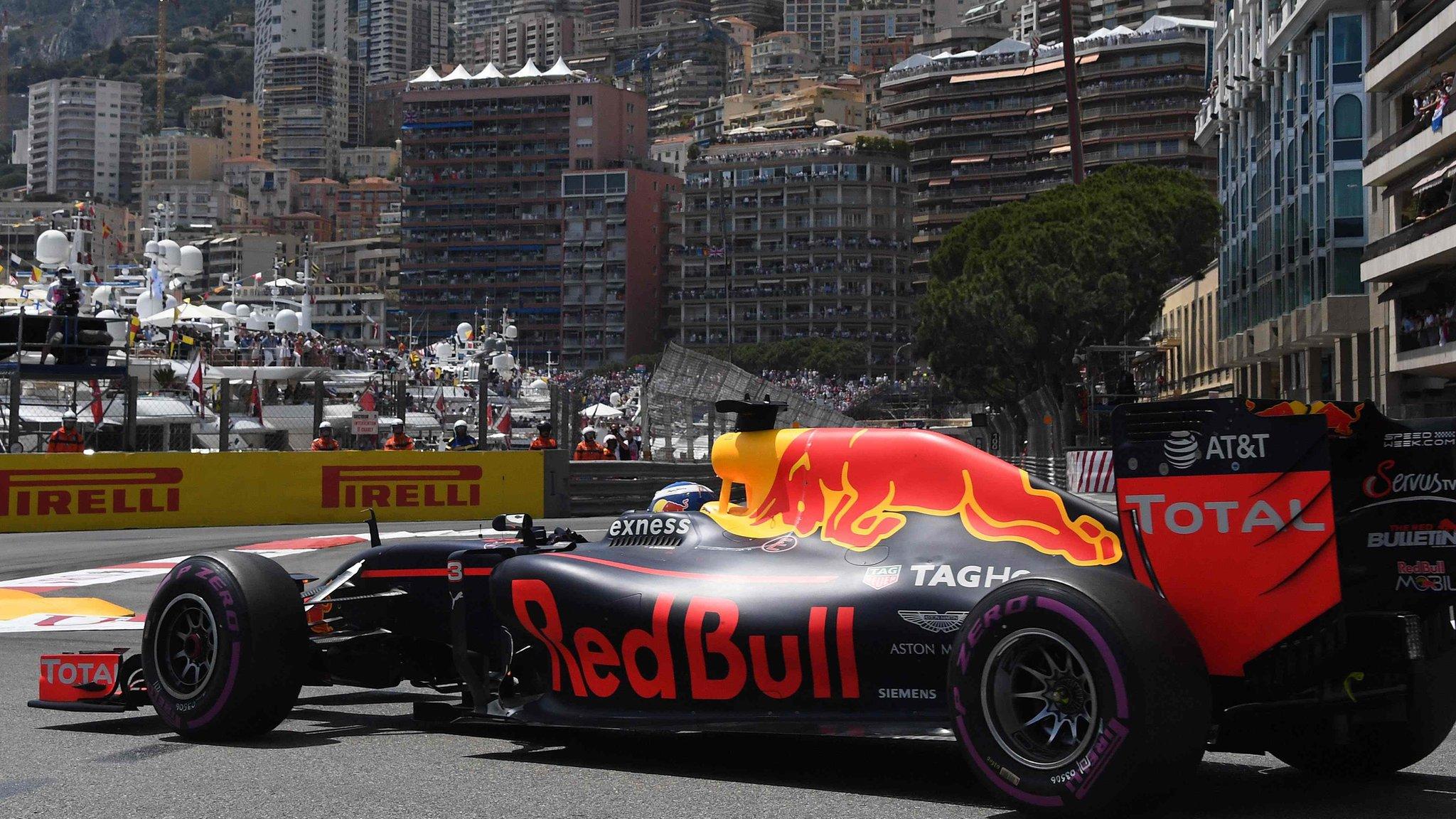
- Published24 May 2016
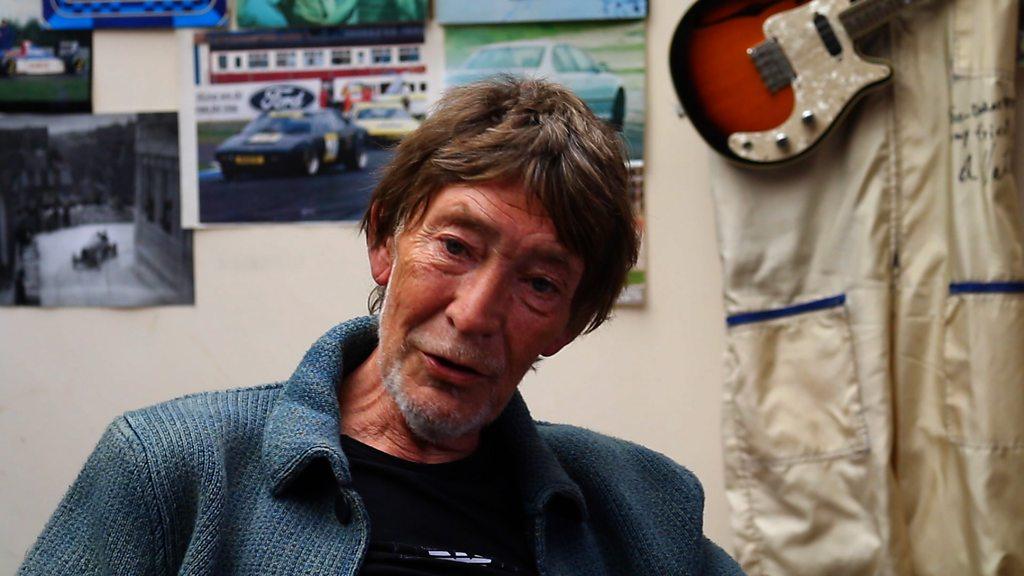
- Published18 December 2015

- Published2 November 2018

- Published13 May 2016
